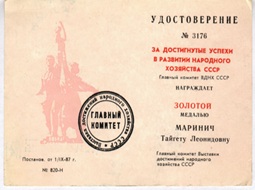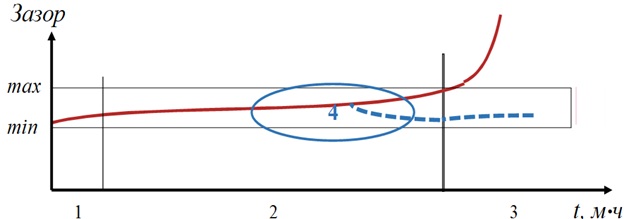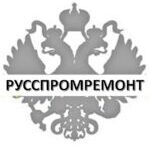
According to experts, the loss of funds from friction and wear in developed countries accounts for 4-5% of national income and overcoming friction drag absorbs 20-25% of energy output per year worldwide. It is noted, that the main reason of machines and mechanisms parts going out of service in operation is wear of friction surfaces.
Engineers of the Leningrad Institute of Aerospace Instrumentation, solving the problem of increasing the wear resistance of friction pairs, proposed the use of mineral compositions.

This area of research was supported by the chairman of the Leningrad branch of the Interdepartmental Scientific Tribology Council at the USSR Academy of Sciences, General Director of «Mekhanobr» V.I.Revnivtsev, who organized fundamental researches of the emergence of anti-wear properties of minerals during activation. The merits of scientists in combating wear and tear were appreciated in 1987: at VDNH – LIAP was awarded a diploma of the 1st degree, Marinich Taygeta Leonidovna, a senior researcher at the institute, a developer of geoenergy technologies, was awarded a gold medal – (Fig. 1, Fig. 2).
Applied researches of this area have made it possible to create a technology for controlling wear in friction pairs.
In Figure 3 shows the classic conditional curve of friction pair wear versus time: section 2 – the normal operation period, section 3 – the period of catastrophic wear that leads to the collapse of the mechanism, section 4 – the blue line shows changes in the course of the classic wear curve as a result of the use of special mineral compositions – partial compensation for the amount of wear that has occurred and a decrease in the intensity of further wear of the restored surfaces.

Thus, the use of special mineral compositions makes it possible to maintain the values of clearances in friction pairs of operating mechanisms in permissible ranges, ensuring normal operation in the required time interval without emergency wear (Fig. 4).
Figure 4 shows the change in the course of the classic conditional curve of the friction pair wear versus time: section 3 – the period of normal operation provided by repeated uses of mineral compositions. The industrial version of this technology was called «РВС-технология» by the name of the mineral compositions used – repair and restoration compounds (РВС).

RRC-technology (patent RF for invention №2266979) is a non-disassembled technology for restoring and improving the characteristics of machines and mechanisms without decommissioning using repair and restoration compounds (RRC) that implement the effects of restoration and “non-wear” in friction pairs.
Treatment of equipment, that is existed at different stages of operation, with the RRC-technology makes it possible to guarantee improvement of its characteristics:
– increase the service life between overhauls of units and mechanisms by 2 times or more;
– ensure trouble-free operation under extreme operating conditions – even in the complete absence of oils and lubricants;
– increase useful power of mechanisms up to 15%;
– increase the service life of oils by 2-4 times;
– reduce power and fuel consumption by 2% – 15%;
– reduce noise and vibration during operation of mechanisms;
– reduce harmful emissions of internal combustion engines (ICE).






